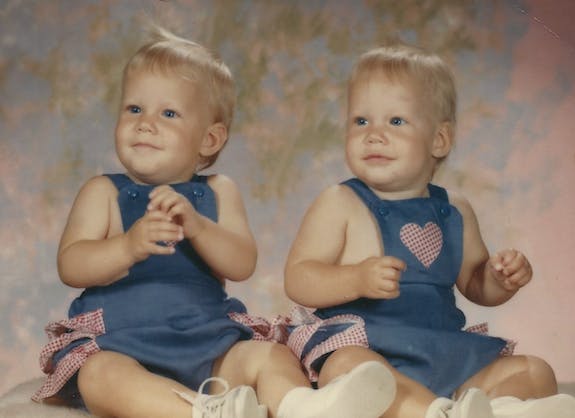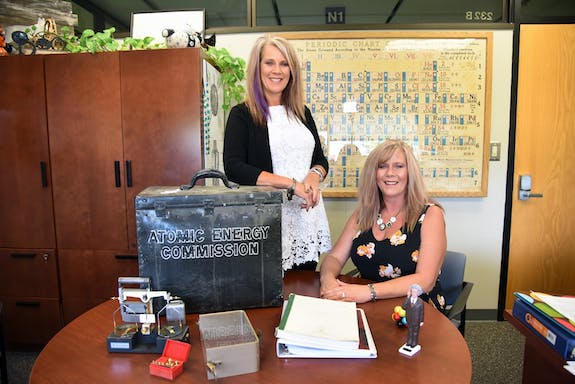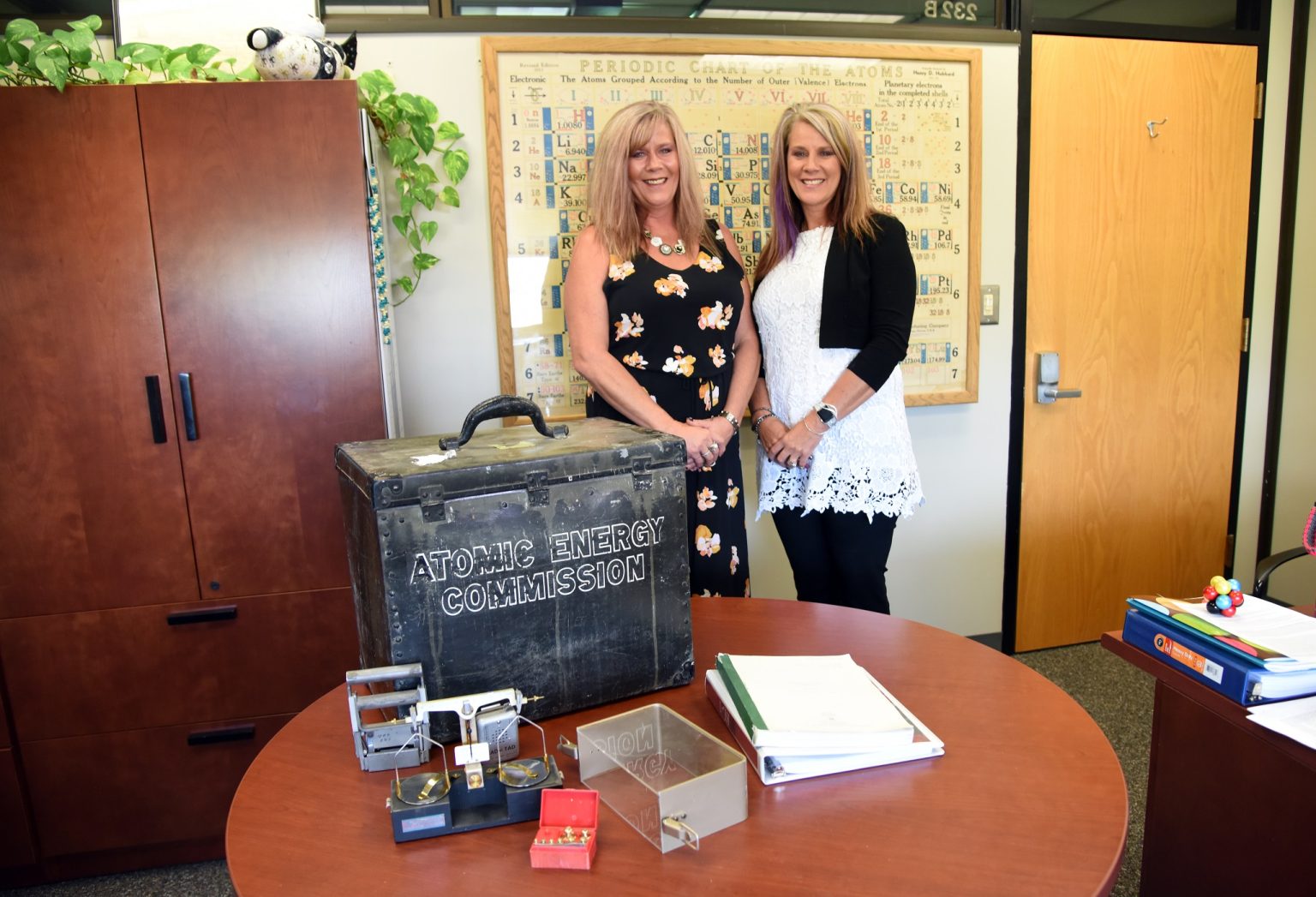When it was time for his twin granddaughters to learn to drive, James W. Codding Jr. taught them in his farm truck on the family ranch off of Cotton Road.
“It was a big one-ton Dodge, ugly blue,” said Jeré Mock. “He told us we were to learn in a standard transmission vehicle. We were out on the cow pasture behind the ranch and he would make us back into the stalls.”
“And you hit the fence,” said her sister, Cheré Morgan, laughing.
Their grandfather, who worked as a chemist at Idaho National Laboratory, didn’t mind another dent in the truck.

Now, decades later, Cheré and Jeré have followed in their grandfather’s footsteps to work at INL, where Jeré is a planning and financial controls specialist and Cheré is the Radiological Control and Emergency Management director and chief operating officer for Environment Safety, Health and Quality.
Their family’s legacy at INL started the 1950s when James W. Codding Jr. and his wife, Evelyn, moved their family to Idaho Falls from New York, where Codding worked at the Knolls Atomic Power Laboratory in Niskayuna.
When Cheré and Jeré were 9 years old, James’ son, James W. Codding III, married their mother, Cheryl, and adopted the girls.
The twins had only a vague notion of what their grandfather’s work entailed. They were more interested in riding the buses that, at the time, would travel through Idaho Falls neighborhoods to pick up INL employees who worked at the Site.
“When we were little, the guy across the street was a Site bus driver,” said Cheré. “We couldn’t wait to get on that bus.”
“The people with the badges were so cool,” Jeré added.
The sisters both described their parents as strict. “They basically told us, ‘You’re going to some kind of school. You two don’t need to depend on anybody for a living,’” said Cheré.

Their mother and father both worked for the police department, “which made things really hard for Jeré,” said Cheré. Both sisters joked that Jeré was considered the “evil twin.”
“I got in trouble every time I got out,” Jeré said. “Mostly because I didn’t get out much.”
When they were little, their mother often dressed them alike, but they began to assert their own individuality in high school. Jeré went for bigger hair and classic styles while Cheré followed the latest fashion trends.
Still, the sisters played the typical twin pranks. When they got bored talking to their boyfriends, they would hand the phone to one another, and they even sometimes switched classes in high school.
Their independent streaks continued after high school. When they turned 18, Cheré decided to enroll in a radiation safety program at Eastern Idaho Vocational Technical School (now the College of Eastern Idaho).
“Grandpa was very excited about that,” Cheré said. “We talked a lot about what that entailed. I would go to his house and he would tutor me. We would have classes on the use of the periodic table and chart of the nuclides.”
By the time Cheré got to school, she found out that all of her grandfather’s help paid off. She was able to navigate the chart of the nuclides. “That was pretty cool,” she said.
Jeré also went to Eastern Idaho Vocational Technical School, but decided to study accounting. After graduation, she went to work at an accounting firm and eventually found a spot at the national lab in 1989. She worked her way up the ranks in general accounting and cost accounting. She left the lab in 2002 and returned in 2004 to work in planning and financial controls at the Advanced Test Reactor Complex.
Today, she’s the planning and financial controls specialist for the Lab Director’s Office, Center for Advanced Energy Studies, and Communications and Outreach.
Meanwhile, Cheré graduated and eventually became the radiological control supervisor for the outer areas at the ATR Complex (then called the Test Reactor Area), which included the Materials Test Reactor, TRA hot cells and the Radiochemistry Wing. The Radiochemistry Wing included the Lab 127 hot cells. “I remember telling grandpa that we were doing some work in the Lab 127 hot cells and he said, ‘I used to work in those hot cells.’”
“I was working at the same facility,” Cheré said. “That was really special for me. I could just picture him sitting in front of those hot cell windows.”
More recently, the sisters started to dress alike again. They even have a similar hairstyle, which caused some confusion, especially when both sisters worked out at the Test Reactor Area.

Once, during a time when Cheré and a research manager were at odds over something in the Radiochemistry Wing, the manager encountered Jeré in the hallway. She mistook Jeré for her twin and started in on Jeré, said Cheré. “Jeré said, ‘Oh I think you mean my twin sister.”
The manager, likely suspecting more classic twin pranks, shouted “’Oh Cheré, we haven’t got time for this!’” Cheré remembers, because she came around the corner at that very moment.
“There are still people who get us confused,” Jeré said.
Though the sisters chose different career paths, they’ve remained close, and today, they live roughly a mile from each other.
When Cheré was offered a job at the U.S. Department of Energy’s Fernald Closure Project in Ohio, she refused. “There’s no way,” she said. “I couldn’t leave her. We play together. Our husbands play together. We’re best friends.”





